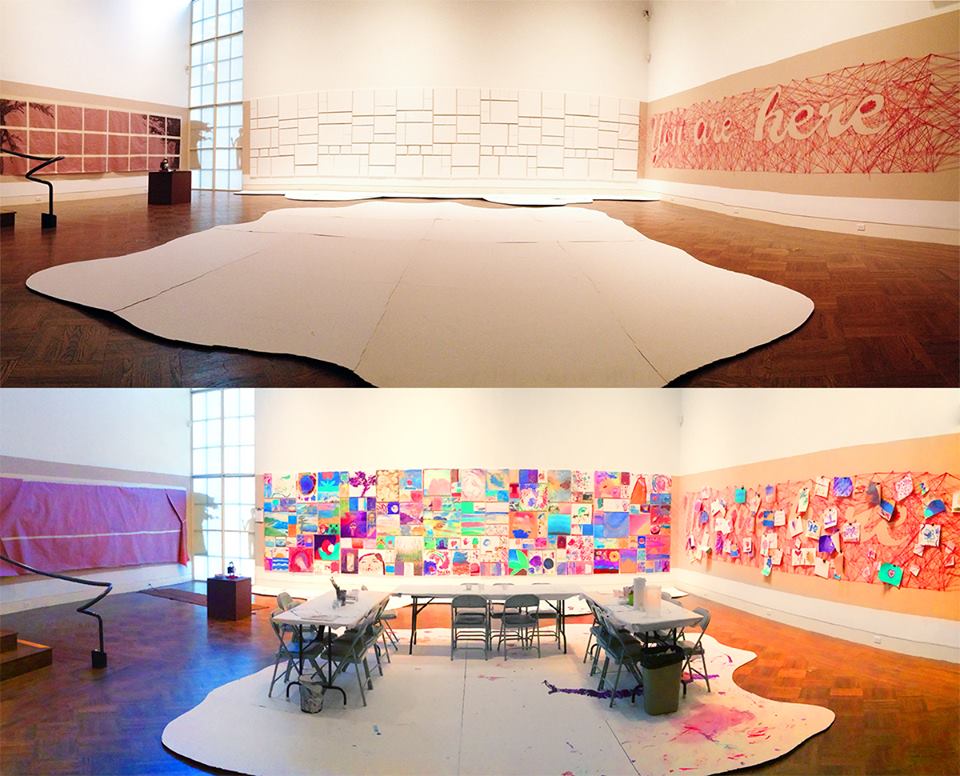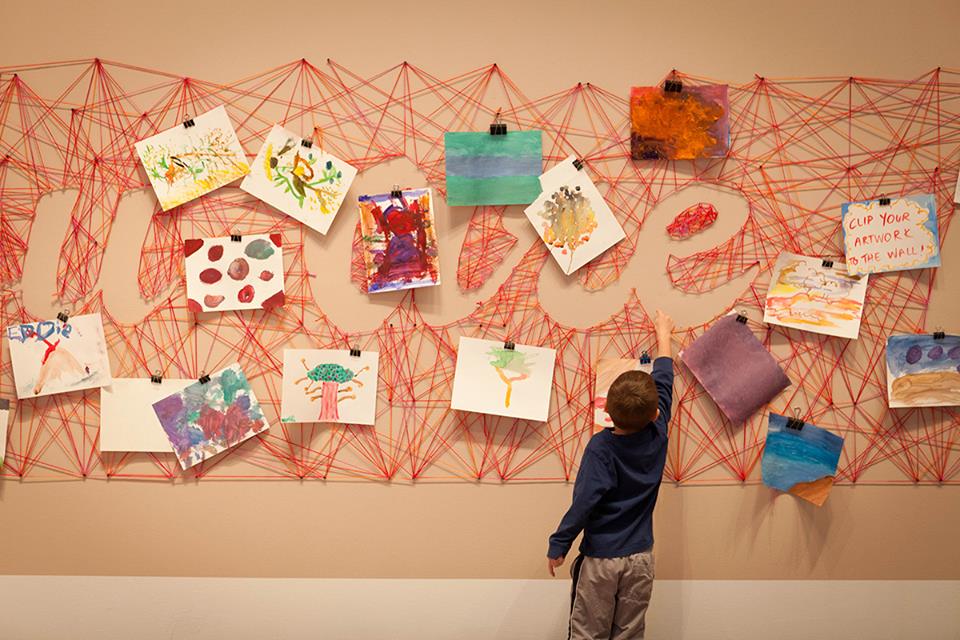By Ami Davis
Art museums, and California art museums in particular, are increasingly tasked with expanding their engagement strategies for the twenty-first century. Demographic shifts in our state are twenty years ahead of the rest of the nation. Youth lack consistent arts education in schools, and thus art museums run the risk of losing the support of future generations. How do we as an art museum sustain ourselves with these changes on the horizon? What are the best adaptations to make as we grapple with the realities of becoming a twenty-first century cultural institution? If we don’t change, and actively engage our visitors in meaningful ways, our mission will be not to thrive, but to merely survive.
The Monterey Museum of Art has a history of integrating interactive spaces into more traditionally curated galleries, but usually only as an appendage to the primary exhibition. We were ready to take a more progressive approach, and make audience participation the central concept behind an exhibition. In the summer of 2014, we realized that we had a large span of time between major exhibitions at our La Mirada location coming up in February through March 2015. We were faced with a golden opportunity to experiment with some of these ideas, and gauge our visitors’ interest in participatory displays. The Education and Community Partnerships Department was thus invited to program, create, display, experiment, and innovate. The theme was, “Open Walls: You Are Here,” a statement intended to convey a sense of openness and belonging to the museum and the greater Monterey region. We asked the Education and Community Partnerships Department and the Curatorial Department to submit ideas for consideration. While many submissions were from colleagues whose primary role is as front desk staff, many are recent graduates of art programs and demonstrate a diverse range of talents beyond their job descriptions.

"Open Walls: You Are Here," before opening and day of closing.
Criteria for projects included that they be:
- Participatory
- Aimed at all audience types and ages
- Culminates in a singular, generative work of art that visitors contribute to, and that looks cohesive
- Uses existing materials found in the museum, or very few additional materials
- Is mostly self-facilitated, with some facilitation by staff
- Is mindful of constraints, such as using existing hardware in walls and staff time
Together, we planned a cohesive, interactive gallery space that was more than the sum of its parts. Our participatory stations included:
- Mural Painting: Visitors contributed to a wall-sized painted mural showcasing the natural and cultural splendor of Monterey.
- Silhouette Mural: Participants adding your silhouette to a mural of the Monterey community.
- Personal Histories: Visitors marked where they are from on our maps and created a postcard about their Museum visit.
- Photo Booth: Participants took photos with their smartphones about their experiences at the Museum, tagged them with #montereyart, and were able to see them on a live Instagram slideshow on a Smart TV.
Visitors to the museum were actively engaged, and our Family Day in February was the highest attended for the year. We also received positive local press that elevated our museum in the community.
Another important outcome was staff morale. Staff that were part of generating ideas for Open Walls were invested and filled with pride. I noticed staff managing their own timelines particularly effectively, and responding to how participants interacted with the spaces. They proactively noted components that should be improved and conscientiously maintained the spaces.

MMA’s “yarnbombed” title wall becomes an art display after the original painted mural reaches capacity.
Image courtesy of Ian Martin Photojournalism
The product was not a “polished” art exhibition, but a comfortable, accessible space for visitors to feel at home in the museum. We learned that as an art museum known for sophisticated art exhibitions, we are okay with an element of DIY. We learned several other lessons from our experiment, and are asking ourselves a few questions:
- We will strive to interweave interactive components into all of our exhibitions. How can we keep this content fresh for return visitors?
- What is afterlife of projects? What is their legacy, and how will they be used after the project is over?
- Staff collaboration and morale were a huge part of Open Walls’ success. How can we replicate this sense of ownership and accomplishment in other areas of our work, even the more mundane ones?
I’d never had an opportunity like this in my career, and applaud my leadership for providing the space, both literal and figurative, to experiment. Open Walls is a concept we will return to again and again to connect our visitors to art in meaningful ways.
Ami Davis is the Director of Education and Community Partnerships at the Monterey Museum of Art. In her 17 years as a museum educator, Ami has served at a number of institutions including the J. Paul Getty Museum, the Orange County Museum of Art, the San Jose Museum of Art and the Santa Cruz Museum of Art and History.








Add new comment